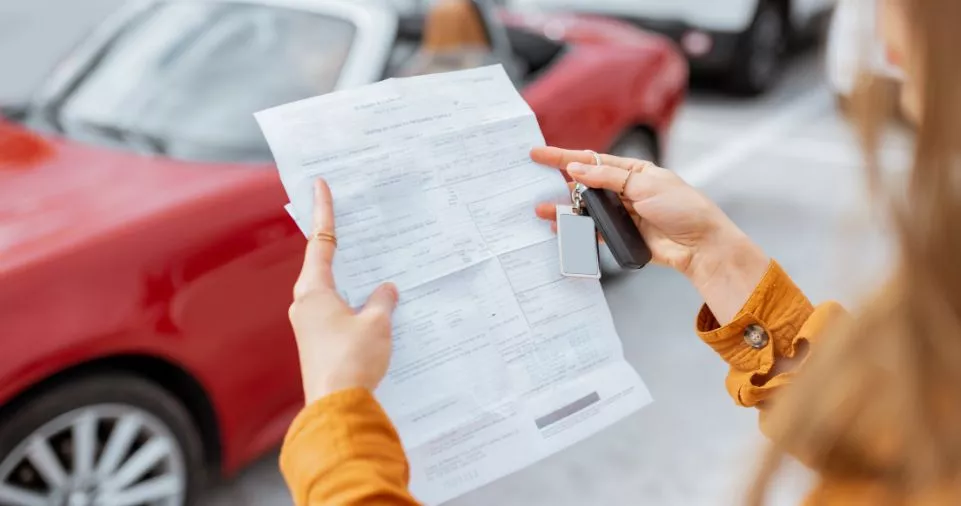Leasing your personal vehicle to a business can be a smart financial move, offering potential tax benefits and creating a structured arrangement for business use.
Table of contents
- Understanding the Basics of Personal Vehicle Leasing
- Assessing the Feasibility of Personal Vehicle Leasing
- Investigating Legal and Tax Implications
- Documenting the Lease Agreement
- Insurance Considerations
- Maintaining Regular Communication
- Tracking Business Mileage
- Handling Maintenance and Repairs
- Managing Fuel Costs
- Dealing with Changes in Business Use
- Understanding Potential Challenges
- Terminating the Lease Agreement
- Seeking Professional Advice
- Conclusion
In the previous article, we discussed ‘How to Start a Business in Washington State.’ Whether you’re a sole proprietor, LLC owner, or operate a corporation, this guide will walk you through the essential steps and considerations involved in leasing your personal vehicle to your business.
Understanding the Basics of Personal Vehicle Leasing
Leasing your personal vehicle to a business involves allowing the business to use your car while maintaining ownership. This arrangement is different from traditional business vehicle leasing, where the business typically owns the vehicle.

Transition to Leasing
To initiate this process, start by understanding the basics of personal vehicle leasing and how it differs from business-owned leases.
Assessing the Feasibility of Personal Vehicle Leasing
Before proceeding, assess whether leasing your personal vehicle to your business is a feasible option. Consider the frequency of business use, the nature of your work, and the potential tax advantages. Ensure that your vehicle is suitable for both personal and business needs.

Evaluating Business Use
Evaluate how much your business will use the vehicle. If it’s a substantial part of your business operations, leasing may make financial sense.
Investigating Legal and Tax Implications
Leasing your personal vehicle to your business involves legal and tax considerations. Research the laws in your state regarding personal vehicle leasing to a business and consult with a tax professional to understand potential tax implications.
Tax Advantages
Investigate the tax advantages of leasing your personal vehicle to your business, such as potential deductions for lease payments and related expenses.
Documenting the Lease Agreement
Draft a comprehensive lease agreement outlining the terms and conditions of the arrangement. Include details such as the duration of the lease, lease payments, responsibilities for maintenance and repairs, and any mileage limitations.
Professional Assistance
Seek legal advice when creating the lease agreement to ensure it complies with relevant laws and protects both parties.
Insurance Considerations
Verify how insurance coverage will work under this arrangement. Contact your insurance provider to discuss whether you need additional coverage for business use and how it may impact your premium.
Insurance Adjustments
Adjust your insurance policy accordingly to cover both personal and business use. Failure to disclose business use may result in coverage issues.
Maintaining Regular Communication
Communication is key in any business arrangement. Maintain regular communication with the business using your vehicle to address any issues, schedule maintenance, and ensure compliance with the lease agreement.
Record Keeping
Keep detailed records of business use, mileage, and any expenses related to the vehicle. This documentation will be essential for tax purposes and for maintaining a transparent business relationship
Tracking Business Mileage
Efficiently tracking business mileage is crucial for both accurate record-keeping and potential tax deductions. Consider using mileage-tracking apps or maintaining a logbook to record business-related trips.
Regular Audits
Regularly audit your mileage records to ensure they align with the terms of the lease agreement and tax regulations.
Handling Maintenance and Repairs
Clearly outline in the lease agreement how maintenance and repairs will be handled. Determine whether the business or you, as the vehicle owner, will be responsible for routine maintenance and unforeseen repairs.
Scheduled Maintenance
Schedule regular maintenance to keep the vehicle in good condition and minimize unexpected breakdowns that could disrupt business operations.
Managing Fuel Costs
Define how fuel costs will be managed in the lease agreement. Decide whether the business will cover all fuel expenses or reimburse you for business-related fuel usage.
Expense Reporting
Implement a system for reporting and reimbursing fuel expenses promptly to avoid financial complications.
Dealing with Changes in Business Use
If the business’s use of the vehicle changes significantly during the lease period, revisit the lease agreement. Discuss potential adjustments to lease terms, such as mileage limitations, lease duration, or monthly payments.
Flexibility
Maintain open communication to address changing business needs and adapt the lease agreement accordingly.
Understanding Potential Challenges
Anticipate potential challenges that may arise during the lease. These could include disagreements over usage, maintenance issues, or changes in business priorities affecting the need for the vehicle.
Conflict Resolution
Have a process in place for conflict resolution to address any disputes promptly and amicably.
Terminating the Lease Agreement
Clearly outline termination procedures in the lease agreement. If either party wishes to terminate the arrangement, establish the notice period and any associated fees.
Documentation
Ensure that termination is well-documented to protect both parties’ interests.
Seeking Professional Advice
Throughout the lease period, consider seeking professional advice from legal and financial experts. Periodic consultations can help address evolving challenges and ensure ongoing compliance with legal and tax requirements.
Legal and Financial Audits
Periodically audit the legal and financial aspects of the lease arrangement to confirm continued adherence to regulations.
Conclusion
Leasing your personal vehicle to your business can be a mutually beneficial arrangement when managed effectively. In this second part, we’ve covered practical tips for day-to-day management, potential challenges, and additional considerations to help you navigate this business arrangement successfully. By staying proactive, maintaining open communication, and seeking professional advice as needed, you can create a structured and advantageous leasing arrangement for both you and your business. Always remember to adapt the lease agreement to changing circumstances and ensure compliance with legal and tax regulations.
Related Articles:
How to Start a Profitable Watch Business From Home?
How to Start a Virtual Mailbox Business?
How to Start Roadside Assistance Business?
How to Sell a Business in Texas?
How to Start a Mobile EV Charging Business?
How to Start a Mailbox Rental Business?


